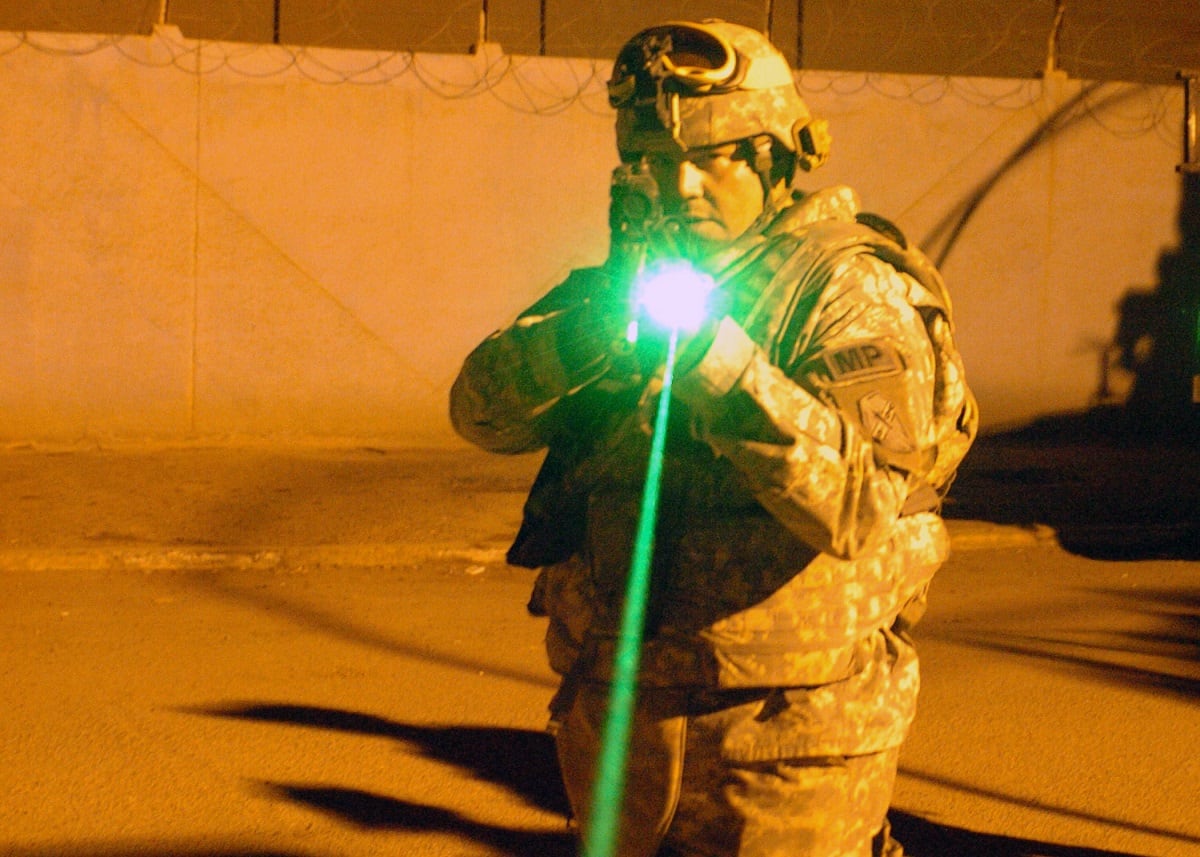Instead of beaming a flashing light or shouting over a loudspeaker to keep people away from sensitive areas, new technology being developed could allow troops to fire a laser that can form a “plasma ball” that talks to the potential intruders.
The Laser Induced Plasma Effect program is part of the Joint Non-lethal Weapons Directorate program to find ways to deter, stun, basically stop adversaries short of killing them.
Use of directed energy, or lasers, includes heating up a target’s skin to extremely uncomfortable levels without burning them, blasting confusing noises or giving voice commands such as, “Stop or we’ll be forced to fire upon you.”
RELATED

It can pass through glass into a building but not yet penetrate other solid barriers, so in its initial stages, the technology would be best used to protect static areas such as forward bases or permanent installations.
But with the right power source setup, a device could be mounted to a small vehicle and make for mobile crowd control or another tool for vehicle patrols to keep people away from convoys.
Researchers such as Brittany Lynn, a scientist with Naval Information Warfare Center Pacific, are fine tuning how to pass sound waves through the laser and they recently completed another round of testing in June.
Part of that involves tweaking algorithms to create human speech in the right wavelengths.
The next steps, said Dave Law, chief scientist with the directorate, is to push distances out of the short range of a laboratory setting to 100 meters, then to multiple kilometers. Law gave an optimistic timeline of about five years before the tech could be through readiness levels and passed on to troops.
This past year, Lynn told Military Times, they’ve been adjusting high and low frequencies to mimic human speech.
Early speech mimicking this year has provided a boost to the program that Law sees as promising. That’s because once that is solved, the distance problem is much less difficult.
“Now I can put it anywhere. Range doesn’t make any difference,” Law said in an interview with Military Times last year. “Put plasma at a target, modulate it and it can create a voice.”
At the same time, the setup can also act as a reusable flashbang that can pulse 155 decibel frequencies near continuously, as compare to standard flashbang grenades that can make one, sometimes two loud blasts to disorient people.
That increases Tactics, Techniques and Procedures use of flashbangs from seconds to minutes, Law said.
For voice commands, the quality doesn’t have to be crystal clear to get the message across, Lynn said. A mobile phone speaker runs at about 8 kilohertz and the human voice ranges to 20 kilohertz. So, there’s leeway in the fidelity of the sound.
The laser causes a similar effect that a jet airplane does when it creates a sonic boom, both Law and Lynn said.
“We’re doing the same thing but instead of doing an airplane, we have those electrons,” Law said.
The hurdle is creating the effect in a portable 5- to 10-kHz laser, Lynn said.
The laser strips away electrons and creates a white ball. That’s what the recipient would see, or feel, on the other end of the laser device.
The skin heating option works in a very similar way, but to a different effect.
The laser-induced plasma weapon uses very high-energy lasers at a very short pulse rate to strip the electrons off a gas, creating plasma.
That is then used to poke through clothing and drill smaller than microscopic holes in a person’s skin. The drilling doesn’t cause damage but it does set off nerve responses, making the person very uncomfortable.
“It’s basically going to hurt,” Law said.
Past efforts hit some of the objectives but couldn’t quite get the voice commands to work, according to a posting on the Small Business Innovation Research program.
That’s from a current request by the Marine Corps for a Scalable Compact Ultra-short Pulse Laser System.
Todd South has written about crime, courts, government and the military for multiple publications since 2004 and was named a 2014 Pulitzer finalist for a co-written project on witness intimidation. Todd is a Marine veteran of the Iraq War.



